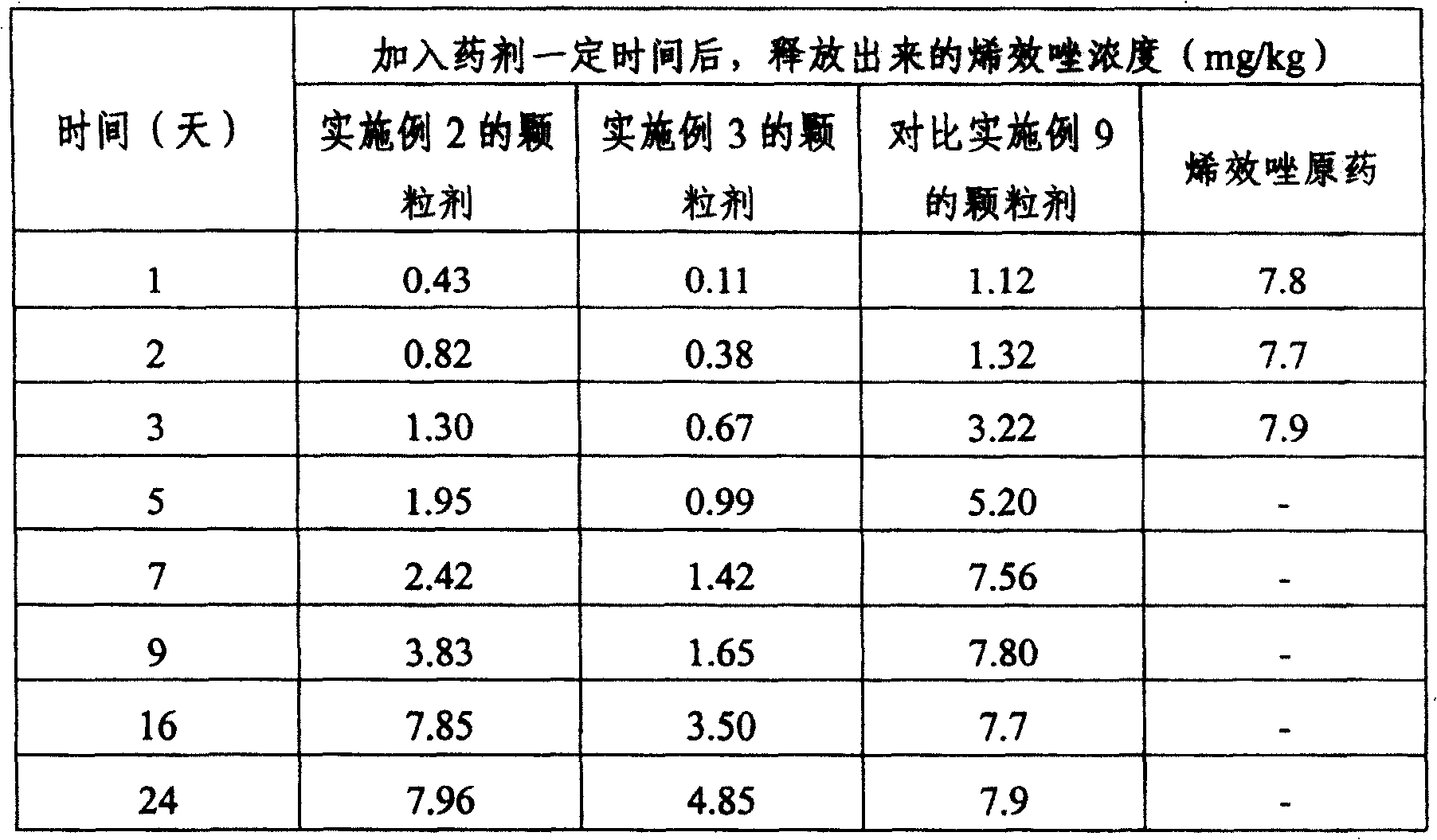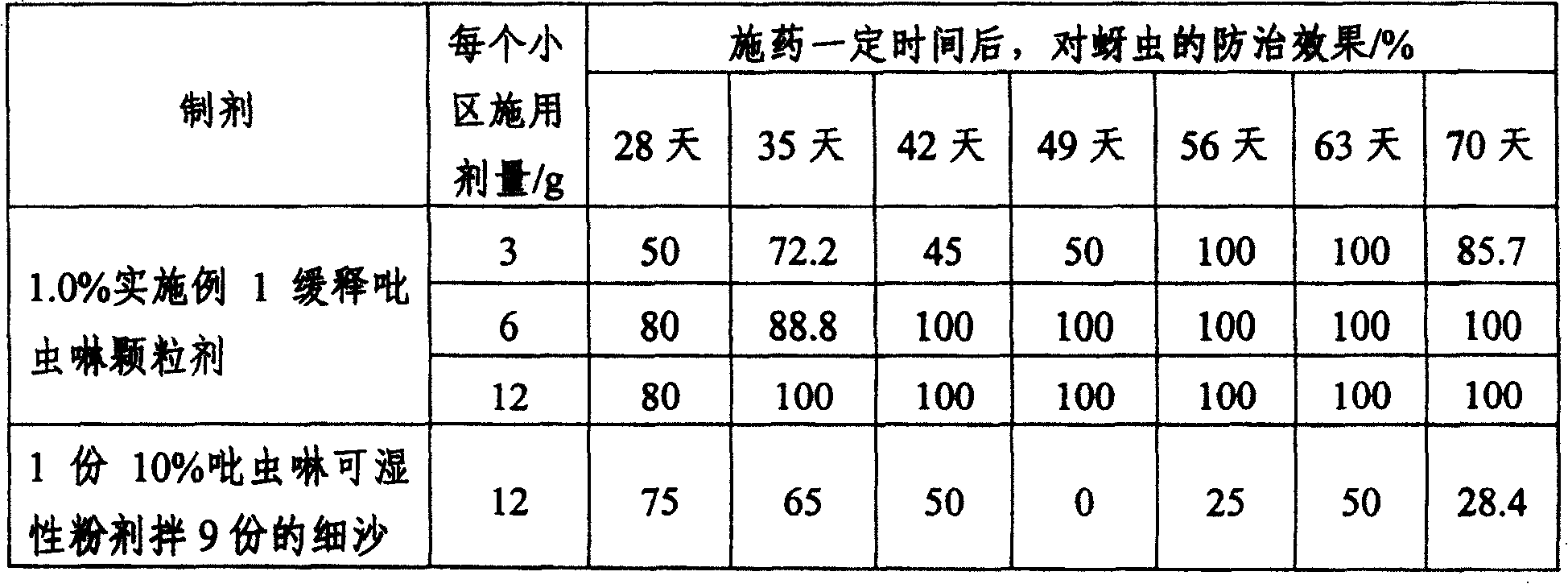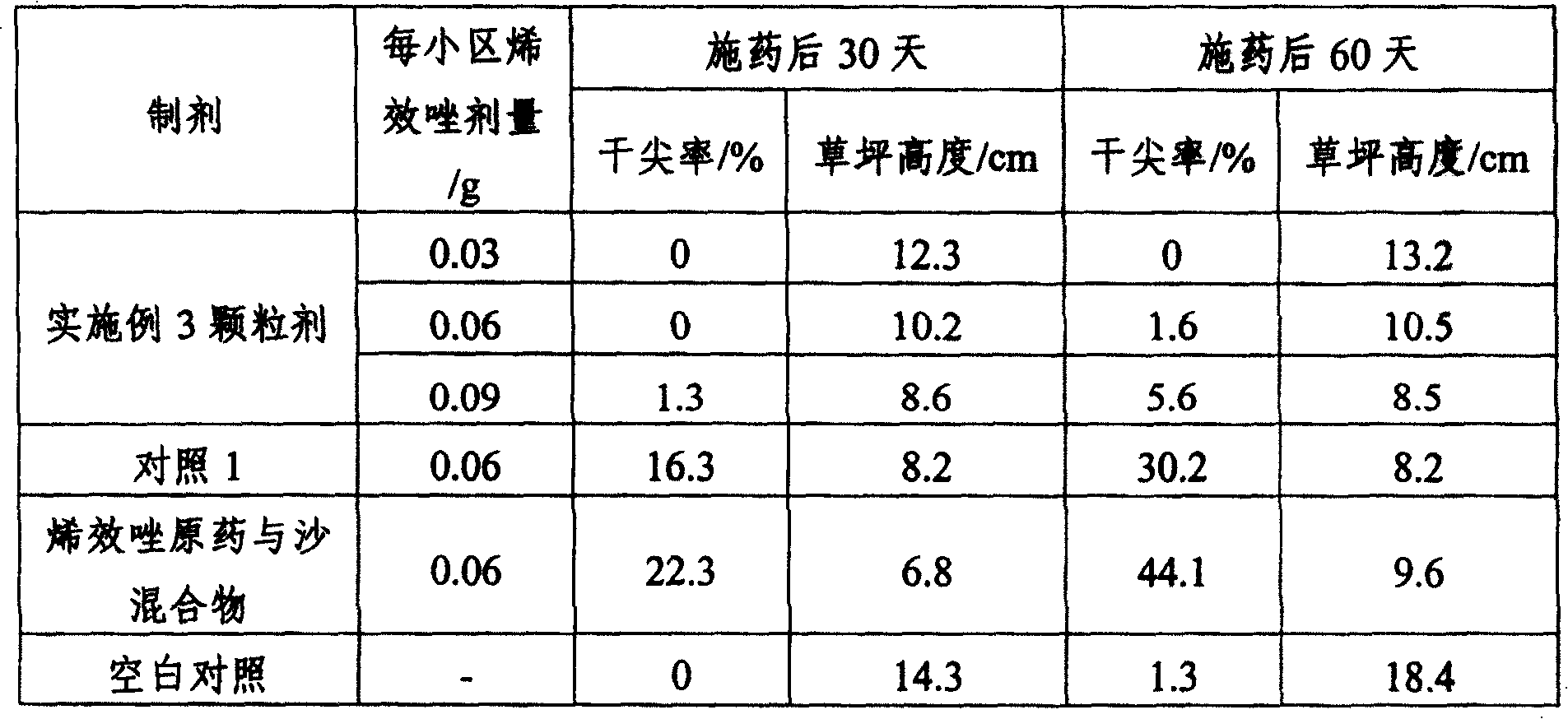Sustained releasing pesticide granule
A technology of slow-release pesticides and granules, applied in the field of pesticides, can solve the problems of dispersion of active ingredients, achieve low cost, reduce the number of times of spraying, and save the cost of spraying
- Summary
- Abstract
- Description
- Claims
- Application Information
AI Technical Summary
Problems solved by technology
Method used
Image
Examples
Embodiment 1
[0045] Embodiment 1 prepares uncoated sustained-release imidacloprid granules
[0046] a) Add 100 grams of α-cyclodextrin to 400 grams of water, gelatinize at 80°C for 120 minutes, and keep stirring during the heating process;
[0047] b) The gelatinized α-cyclodextrin in (a), 20 grams of imidacloprid, 5 grams of sodium dioctyl sulfosulfonate and 5 grams of formaldehyde were stirred and mixed at 3000 rpm at 20° C. for 5 minutes.
[0048] c) Next, the mixture obtained in (b) was left to gel at 25° C. for 8 hours, then dried in an oven at a temperature of 75° C., and then pulverized.
[0049] d) the product of step (c), 1820 grams of bentonite and 50 grams of polyvinyl alcohol are granulated by a disk granulator, and its rotating speed is 90 rpm, and the particles of the required particle size are obtained by screening through a classifying sieve. These granules are then dried.
[0050] A 1% uncoated sustained-release imidacloprid granule was obtained.
Embodiment 2
[0051] Example 2 Preparation of coated sustained-release imidacloprid granules
[0052] a) Add 100 grams of hydroxymethyl starch to 400 grams of water, gelatinize at 30° C. for 120 minutes, and stir continuously during the heating process;
[0053] b) The hydroxymethyl starch gelatinized in (a), 20 grams of imidacloprid, 20 grams of sodium lignosulfonate and 5 grams of formaldehyde were stirred and mixed at 3000 rpm for 5 minutes at 20° C.
[0054] c) Next, the mixture obtained in (b) was gelled at 25° C. for 8 h, then oven-dried at a temperature of 75° C., and then pulverized.
[0055] d) the product of step (c), 1000 grams of clay, 650 grams of potassium chloride and 50 grams of polyvinyl alcohol are passed through a disc granulator granulation container at a speed of 90 revolutions per minute, and passed through a grading sieve to screen to obtain the obtained Granules of desired size are then dried.
[0056] e) Take by weighing 60 grams of castor oil and 60 grams of soyb...
Embodiment 3
[0058] Example 3 Preparation of Uncoated Sustained-release Uniconazole Granules
[0059] a) Add 100 grams of sulfate-modified starch to 125 grams of water, gelatinize at 40° C. for 60 minutes, and keep stirring during the heating process;
[0060] b) Stir the sulfated modified starch gelatinized in (a), 10 grams of uniconazole, 20 grams of sodium lignosulfonate and 10 grams of formaldehyde at 50° C. at 1000 rpm, and mix for 10 minutes.
[0061] c) Next, the mixture obtained in (b) was gelled at 10° C. for 4 h. It was then oven-dried at a temperature of 60° C., and then pulverized.
[0062] d) the product of step (c), 900 grams of superphosphate, 600 grams of ammonium bicarbonate, 260 grams of potassium chloride and 100 grams of attapulgite powder are passed through the disc granulator granulation container, and the rotating speed is at 60 rpm, Through the grading sieve, the particles with the required particle size are screened, and these particles are then dried.
[0063] ...
PUM
 Login to View More
Login to View More Abstract
Description
Claims
Application Information
 Login to View More
Login to View More - R&D
- Intellectual Property
- Life Sciences
- Materials
- Tech Scout
- Unparalleled Data Quality
- Higher Quality Content
- 60% Fewer Hallucinations
Browse by: Latest US Patents, China's latest patents, Technical Efficacy Thesaurus, Application Domain, Technology Topic, Popular Technical Reports.
© 2025 PatSnap. All rights reserved.Legal|Privacy policy|Modern Slavery Act Transparency Statement|Sitemap|About US| Contact US: help@patsnap.com



